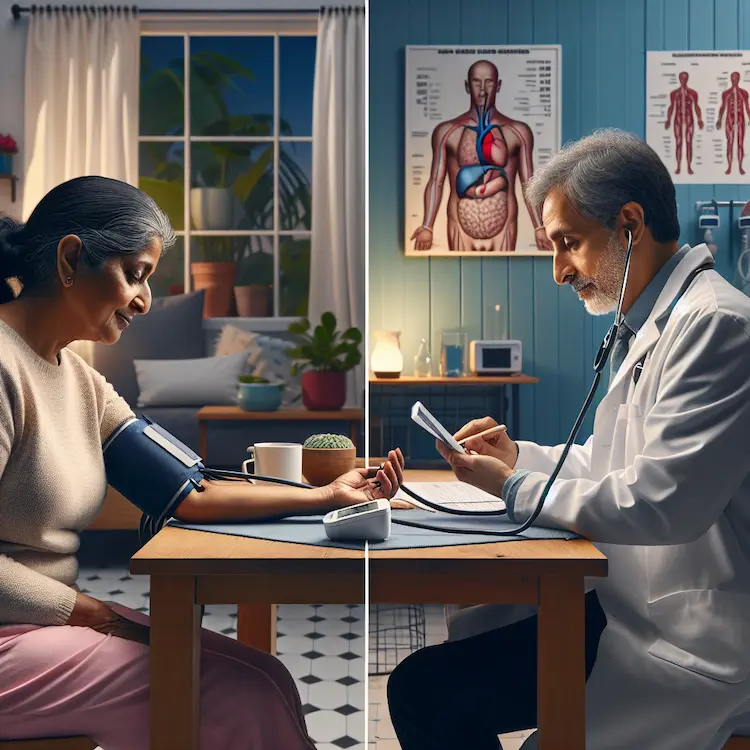Regular blood pressure monitoring is a crucial aspect of maintaining cardiovascular health and preventing serious complications. Understanding how often to check your blood pressure can help you stay on top of your health and detect potential issues early. This comprehensive guide will explore the recommended frequency for blood pressure checks, factors that influence monitoring schedules, and best practices for accurate measurements.
Recommended Frequency for Blood Pressure Checks
The frequency of blood pressure checks depends on various factors, including your current health status, risk factors, and existing conditions. Here are general guidelines for different groups:

For Adults with Normal Blood Pressure:
- Get your blood pressure checked at least once every two years if your blood pressure is in the healthy range (below 120/80 mmHg).
- This recommendation applies to adults with no other risk factors for cardiovascular disease and no family history of high blood pressure.
For Adults with High-Normal Blood Pressure:
- If your blood pressure is “high-normal” (120-139/80-89 mmHg), you should have it checked more frequently, such as every 12 months or as directed by your doctor.
For Adults with Hypertension:
- If you have been diagnosed with high blood pressure or are taking medication for it, you may need to check your blood pressure more frequently.
- Your doctor might recommend daily or weekly measurements, especially when starting or adjusting treatment.
For High-Risk Individuals:
You may need more frequent blood pressure checks if you:
- Are 40 years old or older
- Are overweight or have obesity
- Have a family history of heart disease or diabetes
- Take birth control pills or other medications that can increase blood pressure
- Are Black/African American, as this group is at higher risk for hypertension
Importance of Regular Blood Pressure Monitoring
Regular blood pressure monitoring is essential for several reasons:
- Early Detection: It helps identify hypertension before it causes serious complications.
- Treatment Effectiveness: For those on medication, it allows doctors to assess how well the treatment is working.
- Cardiovascular Risk Reduction: Regular monitoring and management of high blood pressure can significantly reduce the risk of heart disease, stroke, and other cardiovascular problems.
Methods for Checking Blood Pressure
There are several ways to check your blood pressure:
- At-Home Monitoring: Using a home blood pressure monitor allows for frequent, convenient measurements.
- Healthcare Provider Visits: Regular check-ups with your doctor include blood pressure measurements.
- Pharmacy Kiosks: Many pharmacies offer blood pressure checking stations.
- Ambulatory Blood Pressure Monitoring: This method involves wearing a device that takes readings over 24 hours.
Best Practices for Accurate Blood Pressure Measurements
To ensure accurate readings when checking your blood pressure at home:
- Choose the Right Device: Opt for an automated blood pressure monitor with an upper arm cuff for the most accurate readings.
- Proper Timing: Measure your blood pressure at the same time each day, preferably in the morning and evening.
- Prepare Correctly: Avoid caffeine, alcohol, and tobacco for at least 30 minutes before measuring.
- Proper Positioning: Sit with your back straight and supported, feet flat on the floor, and arm supported at heart level.
- Take Multiple Readings: Take two to three readings, each about one to two minutes apart, and calculate the average.
- Record Accurately: Don’t round your measurements up or down; record them exactly as displayed.
Factors Influencing Blood Pressure Readings
Several factors can affect your blood pressure readings:
- Time of day
- Recent physical activity
- Stress levels
- Medications
- Food and drink consumption
- Full bladder
Understanding these factors can help you interpret your readings more accurately and avoid unnecessary concern over temporary fluctuations.
When to Seek Medical Attention
While regular monitoring is important, there are times when you should seek immediate medical attention:
- If your blood pressure suddenly spikes to 180/120 mmHg or higher
- If you experience symptoms such as severe headache, chest pain, or difficulty breathing along with high blood pressure

The Role of Technology in Blood Pressure Monitoring
Advancements in technology have made blood pressure monitoring more accessible and convenient:
- Smartphone Apps: Many apps can help you track and analyze your blood pressure readings over time.
- Wearable Devices: Some smartwatches and fitness trackers now include blood pressure monitoring features.
- Telehealth Services: Remote monitoring allows healthcare providers to track patients’ blood pressure from afar.
Lifestyle Factors for Blood Pressure Management
In addition to regular monitoring, several lifestyle factors can help manage blood pressure:
- Healthy Diet: Follow a balanced diet low in sodium and rich in potassium, fruits, vegetables, and whole grains.
- Regular Exercise: Engage in physical activity for at least 150 minutes per week.
- Weight Management: Maintain a healthy weight to reduce strain on your cardiovascular system.
- Stress Management: Practice relaxation techniques like meditation or deep breathing exercises.
- Limit Alcohol and Avoid Smoking: Both can contribute to elevated blood pressure.
Conclusion
Regular blood pressure monitoring is a crucial tool in maintaining cardiovascular health. The frequency of checks depends on your individual health status and risk factors, ranging from once every two years for those with normal blood pressure to daily for those managing hypertension. By following best practices for accurate measurements and incorporating healthy lifestyle habits, you can take control of your blood pressure and reduce your risk of serious health complications. Remember to consult with your healthcare provider to determine the most appropriate monitoring schedule for your specific needs.

